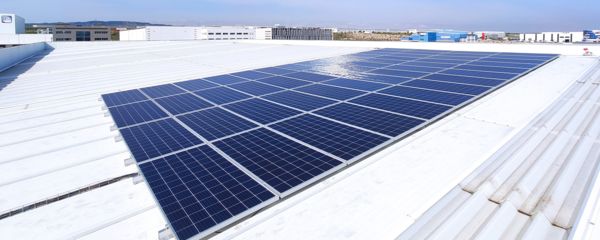Spain combines ERP with solar power

Project goal
The Spanish subsidiary has set itself the goal of covering a quarter of its own electricity requirements with a photovoltaic system.
A detailed feasibility analysis by a local construction company established that the roof of Phoenix Contact’s logistics center in Spain had the necessary load-bearing reserves.
Milestones
- Effective action against climate change with photovoltaics
- Utilization of hitherto unused roof area for the generation of renewable energy
yield of electrical solar power per year
less carbon dioxide
of solar power
Harvesting energy from existing roof surfaces
With a total area of around 6,000 m², the roof of the Phoenix Contact logistics center in the Parque Tecnológico de Asturias in northern Spain offers much more than just a roof over one’s head. Many roofs of large commercial properties remain unutilized because the structures are not designed to handle additional loads. Every additional kilogram brings the roof structure closer to the limit of its calculated load-bearing capacity. Such regulations make it difficult to implement modernizations or retrofits, such as a photovoltaic system, in brownfield applications – which is why lightweight solar panels, for example, are increasingly in demand. They are flexible, weigh little, and can be bonded directly to the roofing material.
Our goal with this investment is to contribute to the fight against climate change.
Maximum solar power with south-facing orientation
In Spain, the decision to invest in a normal photovoltaic system with substructure was based on a detailed analysis of the structural possibilities conducted by a local construction company. It was also possible in Spain to accomplish a rare feat, as the roof has enough reserves to support a static solution. In Spain, the higher yield of the panels compared to the foil version is also boosted by the favorable south-facing orientation – a real stroke of luck. With a calculated annual output of 110 MWh, the company expects the approximately 600 m² system to supply enough electricity to cover around 25% of its own needs. This corresponds to an equivalent of around 40 buildings with about 500 residential units.
Connect with us




